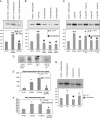The QseC sensor kinase: a bacterial adrenergic receptor
- PMID: 16803956
- PMCID: PMC1482837
- DOI: 10.1073/pnas.0604343103
The QseC sensor kinase: a bacterial adrenergic receptor
Abstract
Quorum sensing is a cell-to-cell signaling mechanism in which bacteria respond to hormone-like molecules called autoinducers (AIs). The AI-3 quorum-sensing system is also involved in interkingdom signaling with the eukaryotic hormones epinephrine/norepinephrine. This signaling activates transcription of virulence genes in enterohemorrhagic Escherichia coli O157:H7. However, this signaling system has never been shown to be involved in virulence in vivo, and the bacterial receptor for these signals had not been identified. Here, we show that the QseC sensor kinase is a bacterial receptor for the host epinephrine/norepinephrine and the AI-3 produced by the gastrointestinal microbial flora. We also found that an alpha-adrenergic antagonist can specifically block the QseC response to these signals. Furthermore, we demonstrated that a qseC mutant is attenuated for virulence in a rabbit animal model, underscoring the importance of this signaling system in virulence in vivo. Finally, an in silico search found that the periplasmic sensing domain of QseC is conserved among several bacterial species. Thus, QseC is a bacterial adrenergic receptor that activates virulence genes in response to interkingdom cross-signaling. We anticipate that these studies will be a starting point in understanding bacterial-host hormone signaling at the biochemical level. Given the role that this system plays in bacterial virulence, further characterization of this unique signaling mechanism may be important for developing novel classes of antimicrobials.
Conflict of interest statement
Conflict of interest statement: No conflicts declared.
Figures




References
Publication types
MeSH terms
Substances
Grants and funding
LinkOut - more resources
Full Text Sources
Other Literature Sources
Molecular Biology Databases

